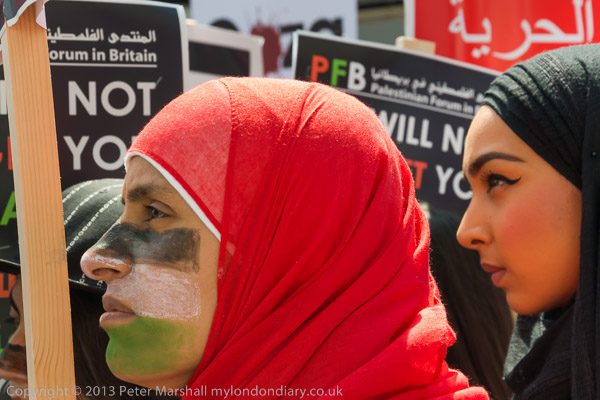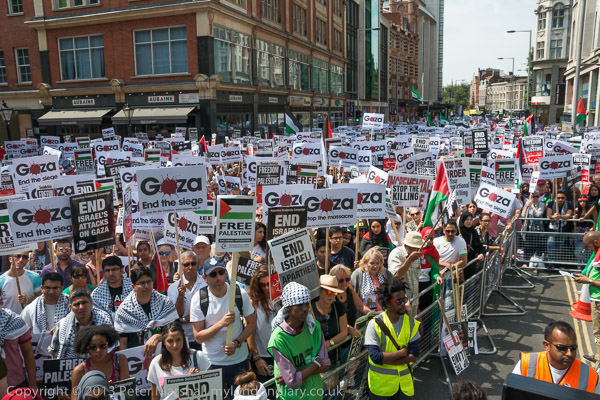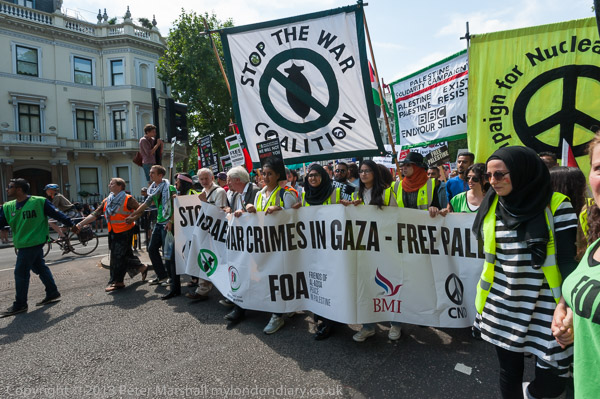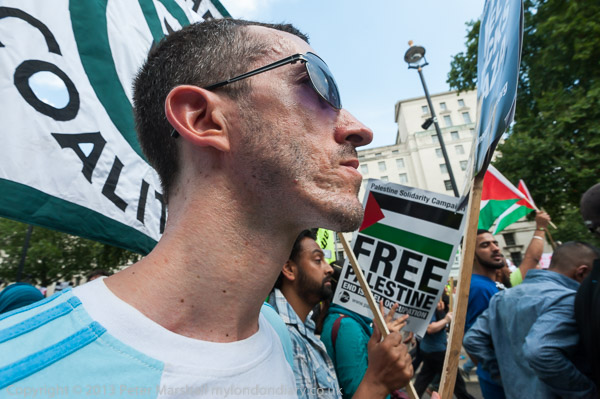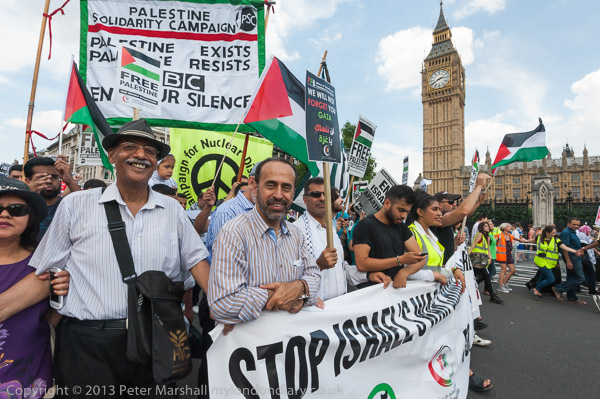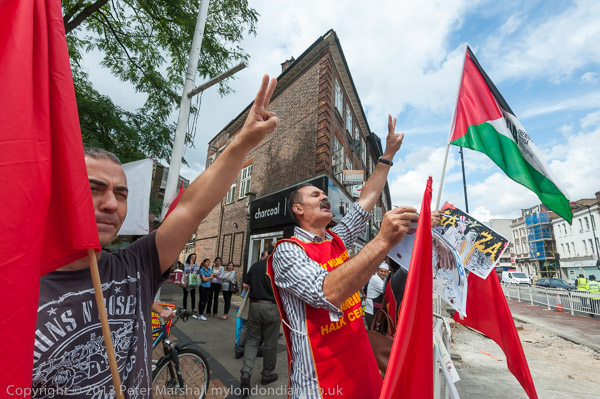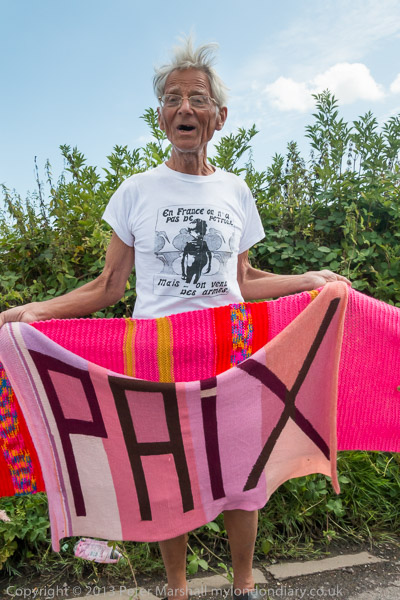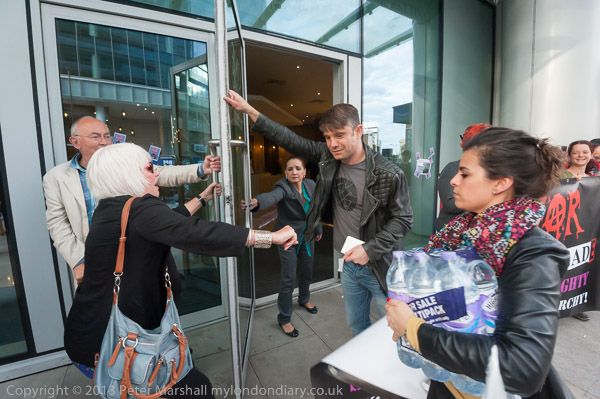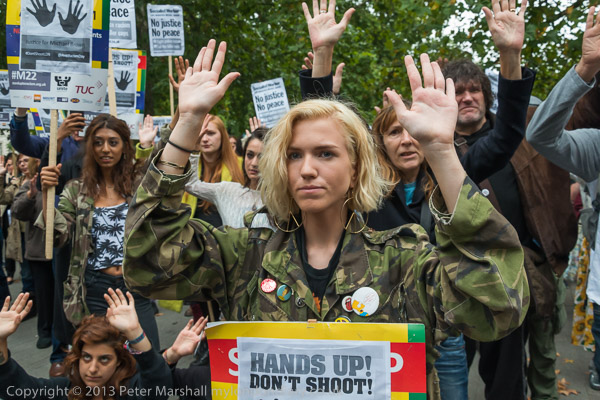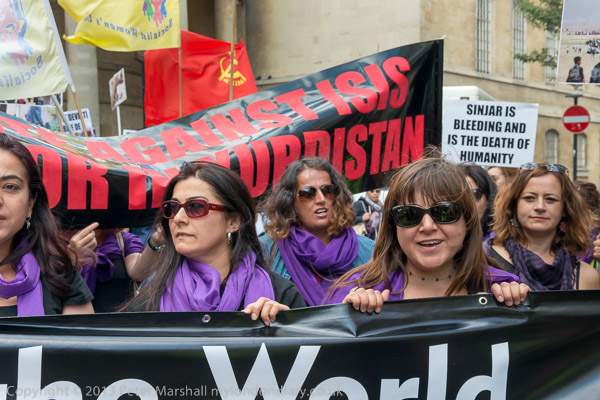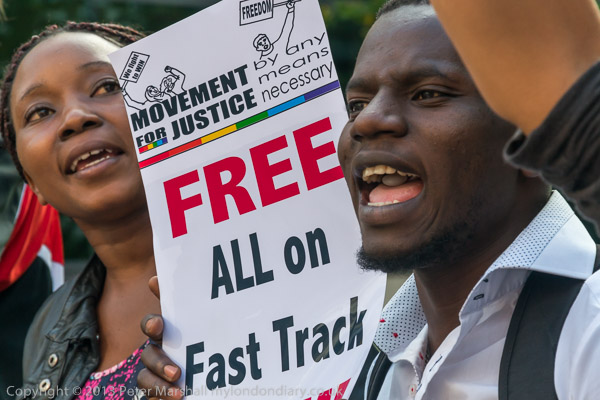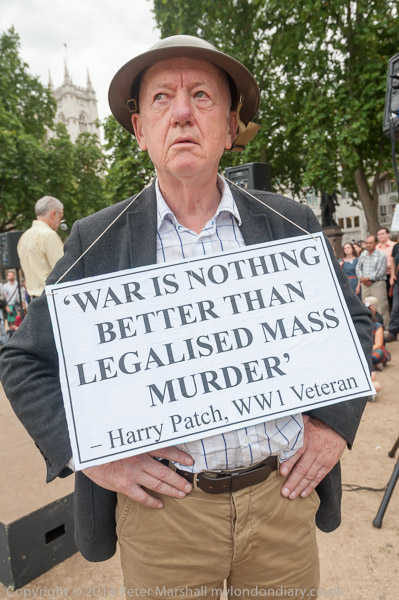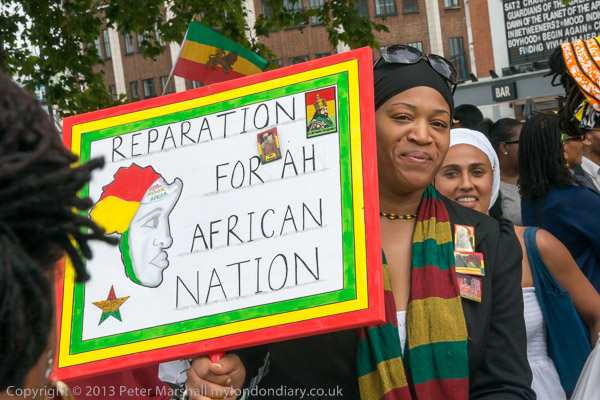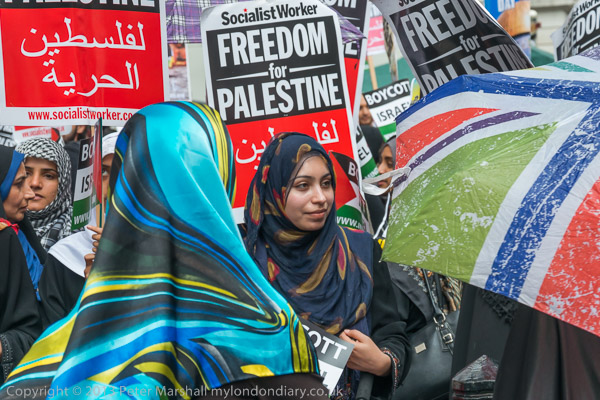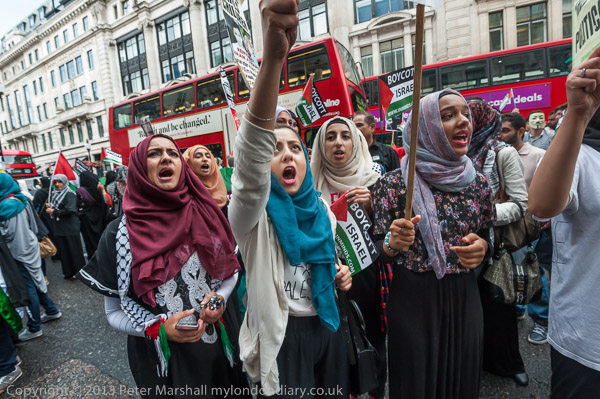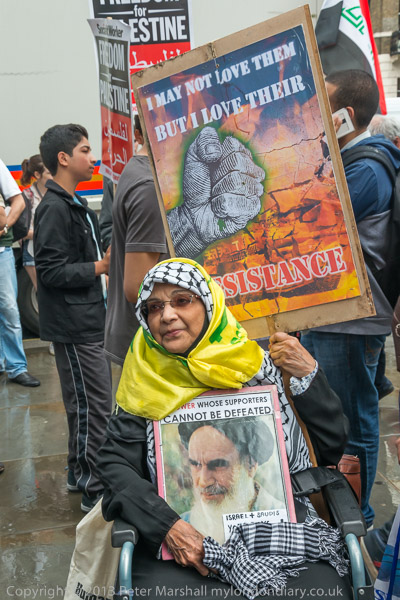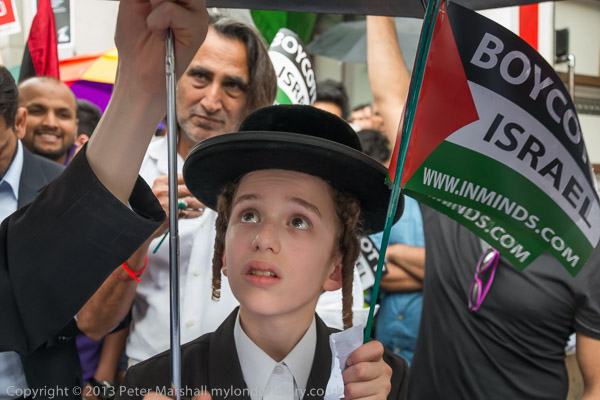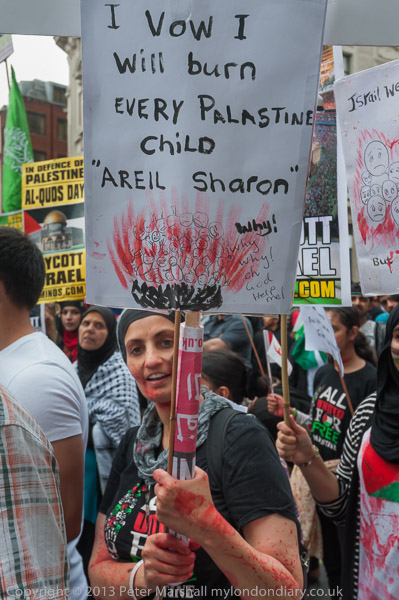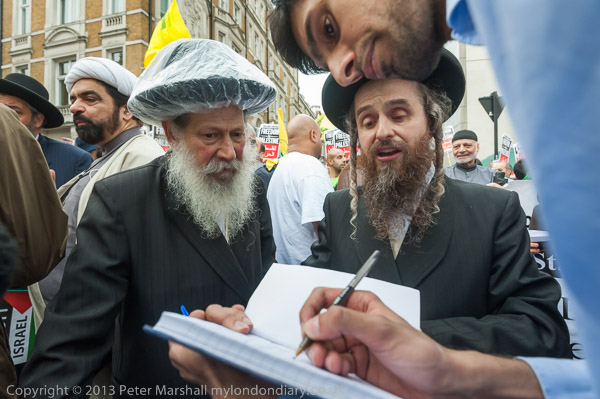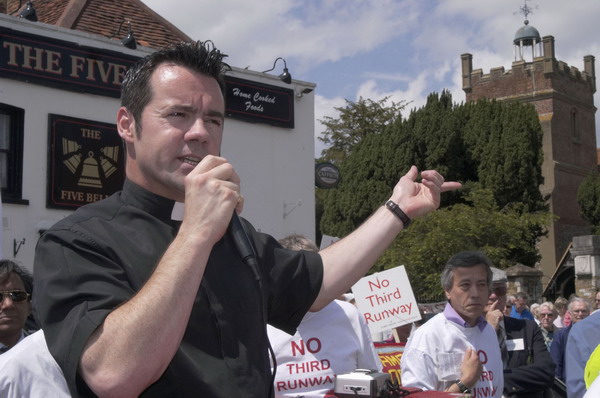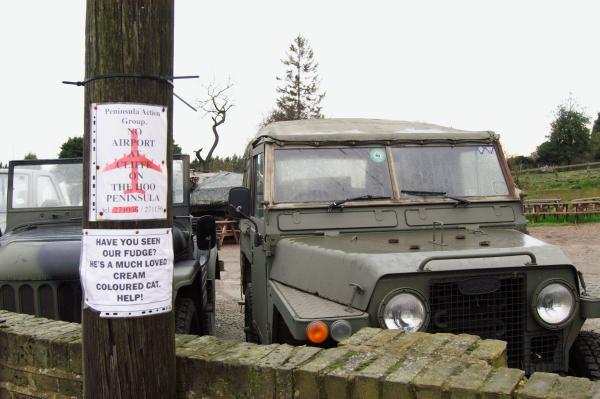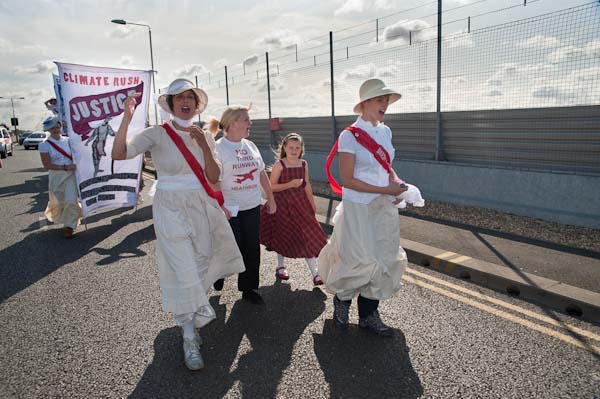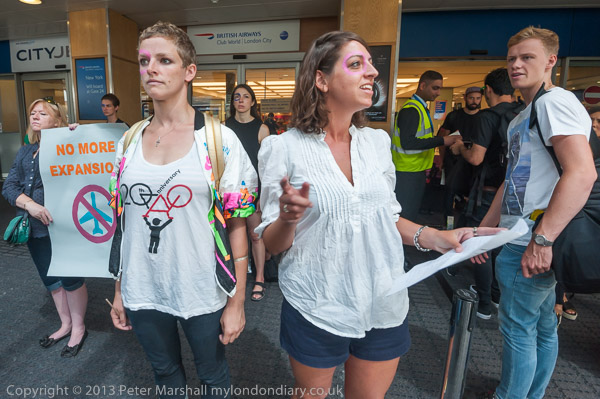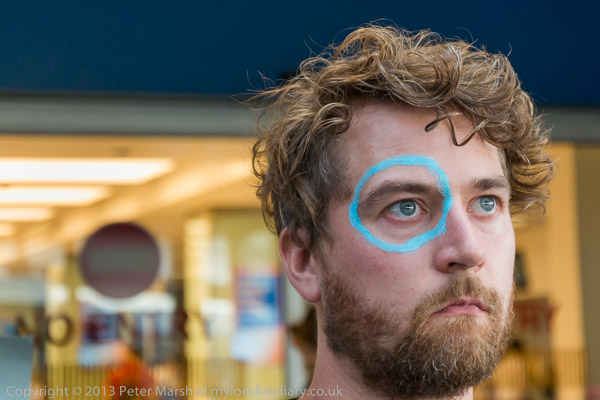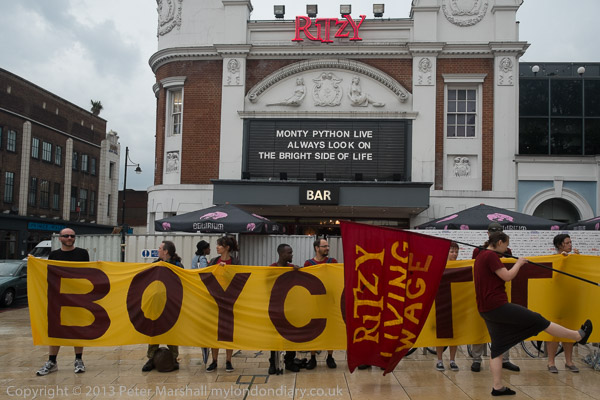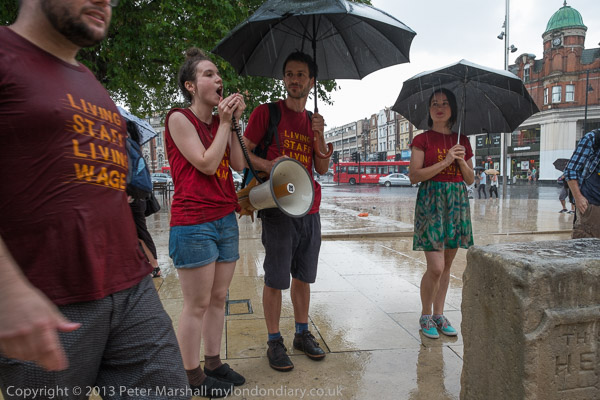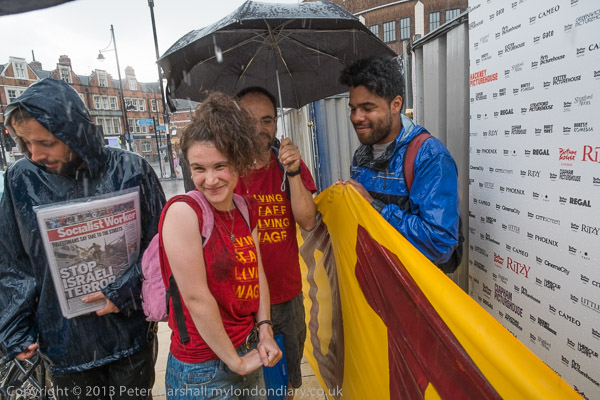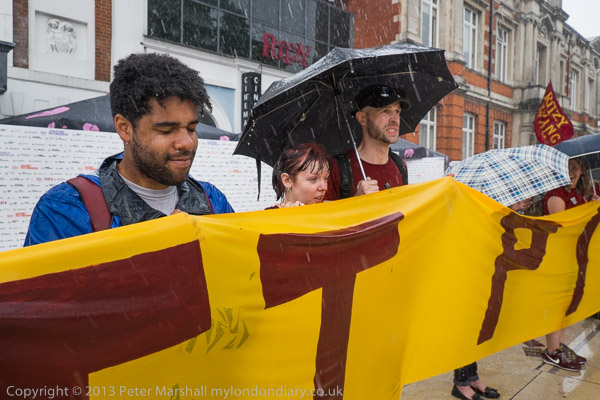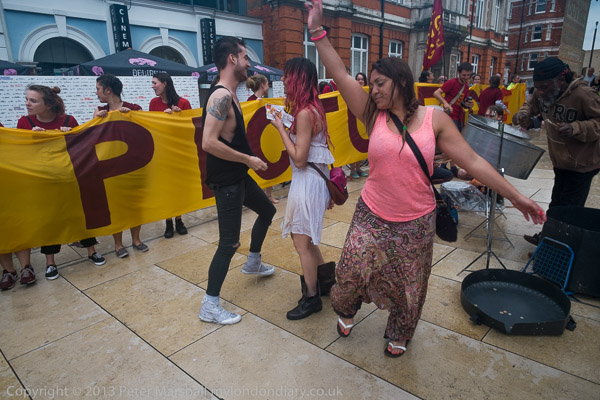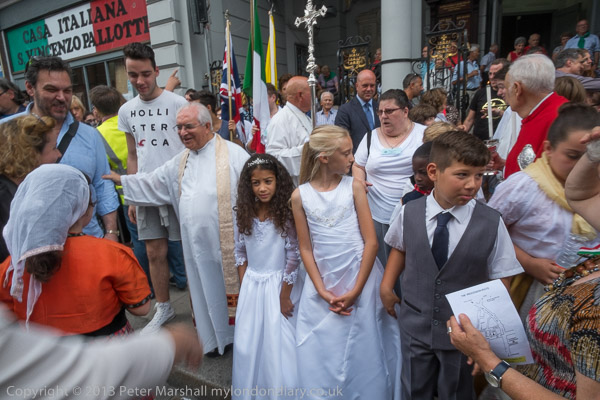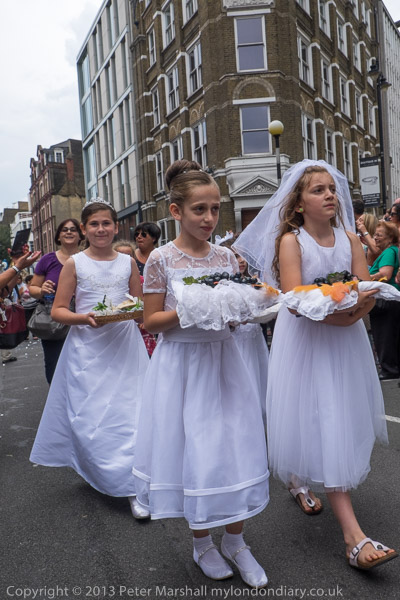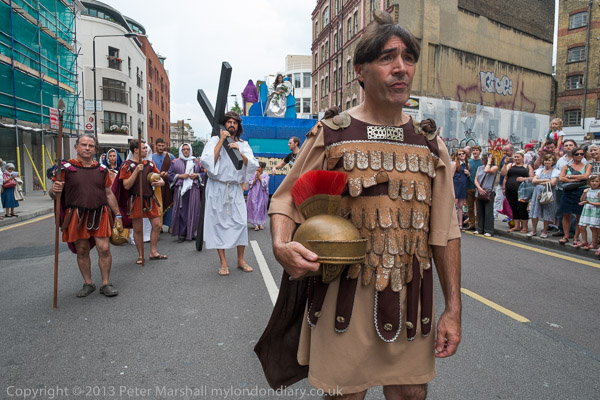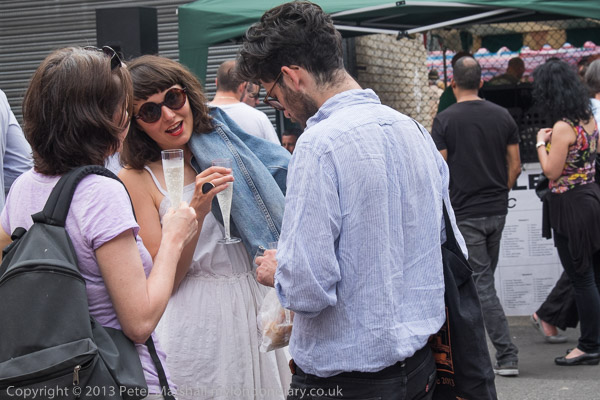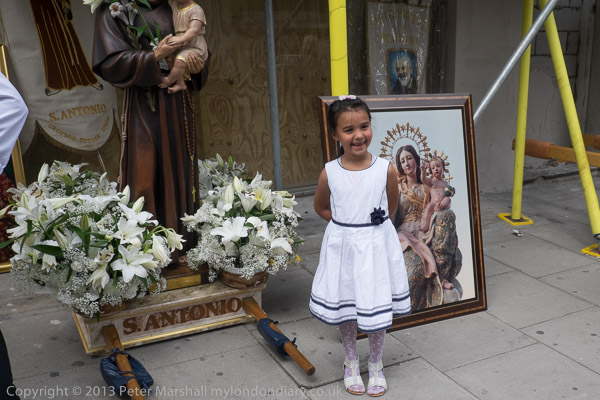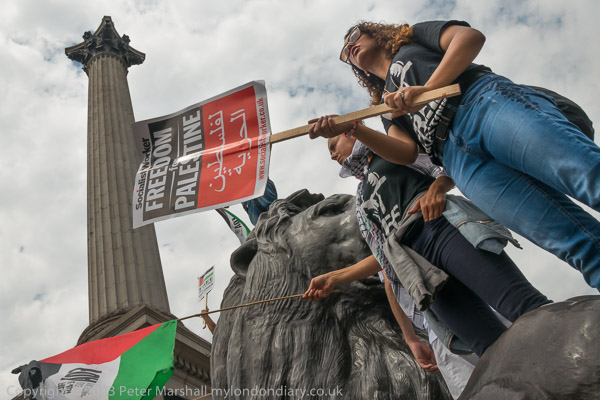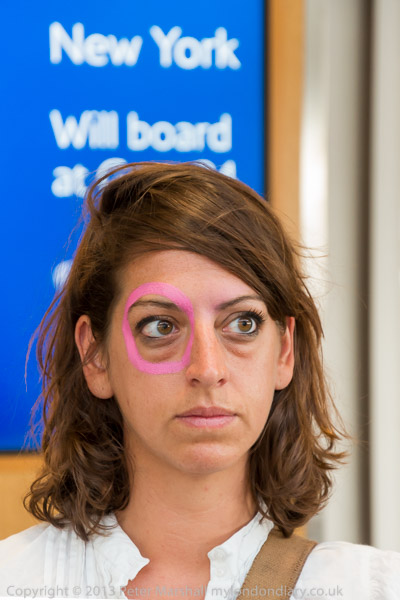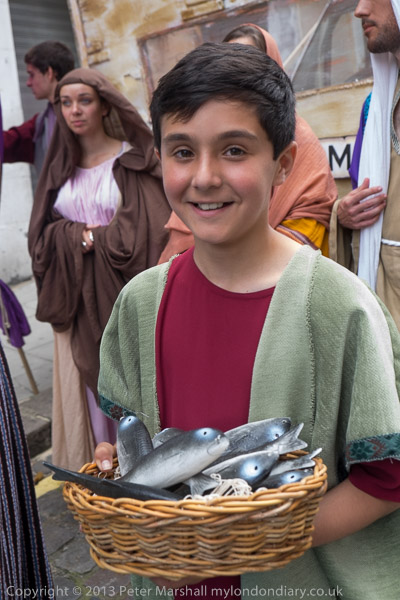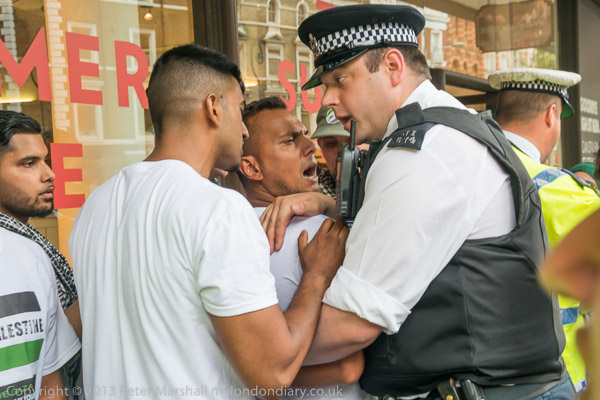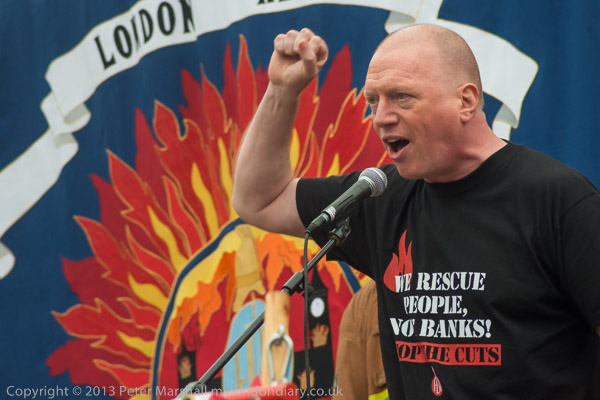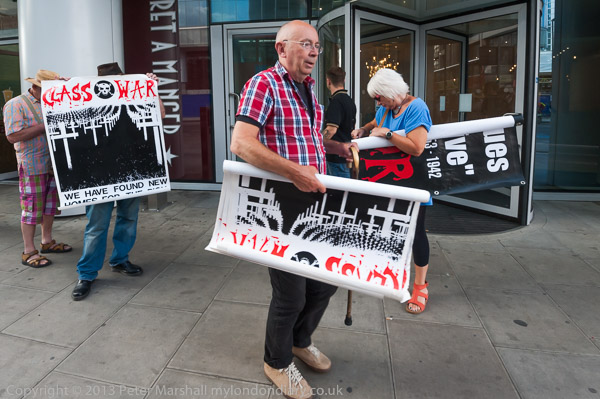
Class War, led by Ian Bone (centre) arrive at One Commercial St for the protest
It’s hard to describe ‘Class War‘, a loose organisation now registered as a political party, and planning to contest at least twenty or thirty constituencies in the 2015 General Election. Recent campaigns they have got behind include one for Independence for South Norwood, carried out at the same time as the Scottish Independence Campaign, with hustings and a vote where the electorate were given three alternatives, to stay as part of the London Borough of Croydon, to apply for South Norwood to join with an independent Scotland or to be completely independent. Unfortunately the Scots didn’t make it, and so South Norwood’s plans had to be abandoned too :-).
Currently too, they are fighting the by-election caused by Tory MP Mark Reckless’s defection to UKIP, with a campaign poster ‘The Working Class needs YOU!’ and the bottom line ‘Vote Holly Smith Because all the other candidates are scum!’ (There are also other posters calling Reckless a ‘toff’ and a ‘wanker’. As Ian Bone comments: “educated at Marlborough College and did PPE at Oxford……… well well…… ..aint he just the toff to represent the working class of Strood?”)
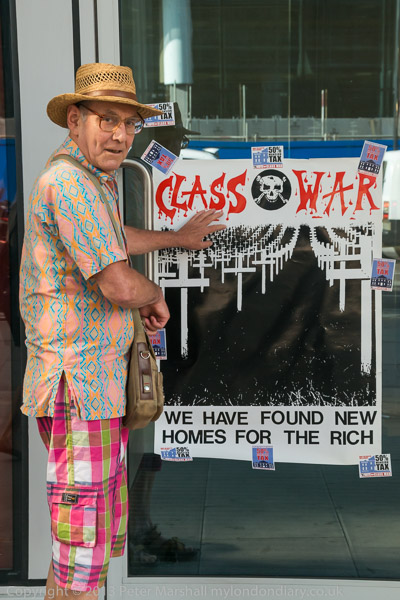
The poster reprints a notorious cover from the ‘Class War’ newspaper in the 1980s
Although Class War should not always (or often if ever) be taken literally, and deliberately try to outrage and poke fun, they often point up serious problems. Britain is still in many respects a class-dominated society, run by the rich for the rich, and those rich are getting relatively richer year by year.
Here is what their web site says about the series of ‘Poor Doors’ protests they began in London at the end of July and have continued every Wednesday since.
London is facing gentrification forcing working people out of their home boroughs as prices rise. Added to the problems of the bedroom tax, inflation, rent rises and pay cuts, working class communities are being dismantled. Social segregation is seeing people being priced out of their own areas. Nowhere is this more stark than in developments using Poor Doors. These developments provide social housing within developments with luxury flats but whilst the rich get a concierge, gyms and other services social housing tenants have no services, separate lifts and an entrance down an ally or round the back.
Class War have been protesting such a development on Wednesday evenings at 1 Commercial Street, which is just next to Aldgate East tube station. We now call on all trade unionists to join us on Wednesday with banners and placards to show solidarity with working people on the fringes of The City. Together we can highlight the injustice of social segregation and widening inequality. Please come down and spread the word.
It’s hard to argue with the first three sentences, something we see happening across London, and something no political party has come up with any policies that would have any real effect (nor for that matter have Class War, and their proposed 50% mansion tax is hardly feasible.) Labour-run councils are actually in the thick of making it happen, just as the other boroughs are. Newham, 100% Labour run, is one of the worse offenders – as the Focus E15 Mums and the Carpenters Estate scandal have pointed out.
Like most new blocks of flats being built in London, most of the flats here are owned by overseas investors, with a rise in value of around 35% expected in the next three or four years. This location is particularly desirable as an investment because it is on the edge of the city but also because investors will benefit from the huge public investment in Crossrail, with a station within spitting distance – private speculators benefiting hugely from public expenditure. Probably like most such investment properties many of the flats will be empty all or most of the year, although some are let out to short-term visitors to London.
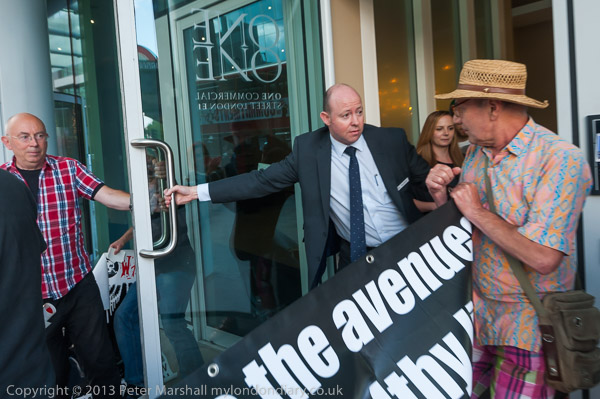
The building manager tries to close the ‘rich door’ than the protesters have held open so the protest can be heard inside
I’ve been following the series of protests with interest, going along most weeks, taking pictures and reporting. This – and the Focus Mums protests a couple of miles down the road – might just be the start of a change in the way we think and act over class and income inequality. Just as we’ve seen UK Uncut protests move the whole issue of tax evasion into the open to where it has now become – at least in part – Tory party policy. Certainly something has to change in how London works and how it houses the low paid workers that keep it running. Perhaps these protests might just be one of the front lines of the class war that we need. And as well as being addressing a serious point, the protests are often rather amusing.
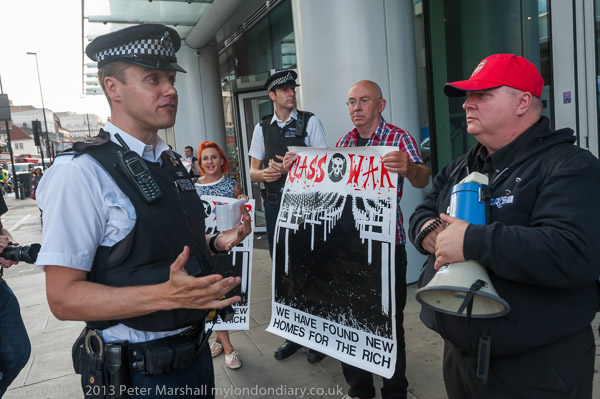
Eventually the police arrive and talk to the protesters, asking them to keep away from the door
Class War’s use of my pictures freely without payment also raise some issues about copyright, but I’m relaxed about this, although wanting to insist that I retain copyright. Class War have little or no money, and these pictures would not exist without their actions and their cooperation. And although I’m not a member of the party (I’m not sure if anyone other than those who registered it as a political party are), its leader Ian Bone has promised me that I’ll become their official photographer when he moves into 10 Downing St :-)
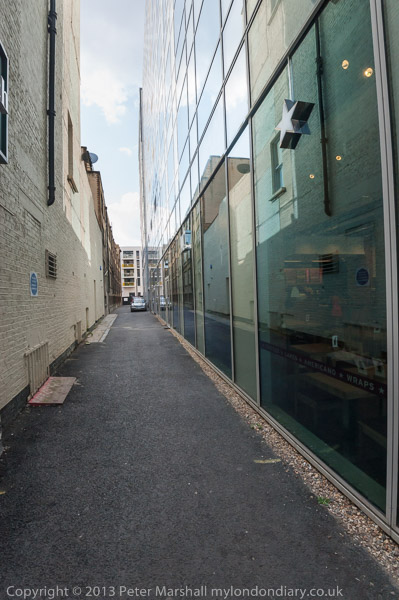
The ‘rich door’ is on the main road and gives onto a wide space with comfortable seating, a 24 hour staffed reception desk and the building managers office. The ‘poor door’ is towards the end of the narrow and rather smelly alley shown above with no proper lighting visible. I was told there was usually rubbish on the street. The poor door opens onto an uninviting long, narrow and empty corridor with just several rows of post boxes on otherwise bare walls, and a notice telling all entering they are on CCTV (though most such cameras are never on.)
More at Class War – Rich Door, Poor Door.
